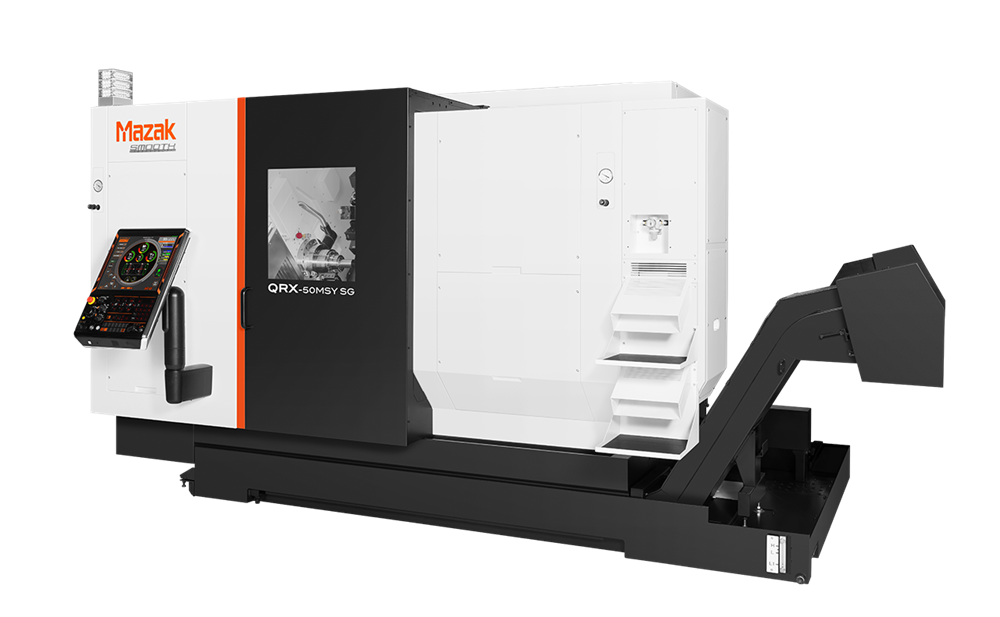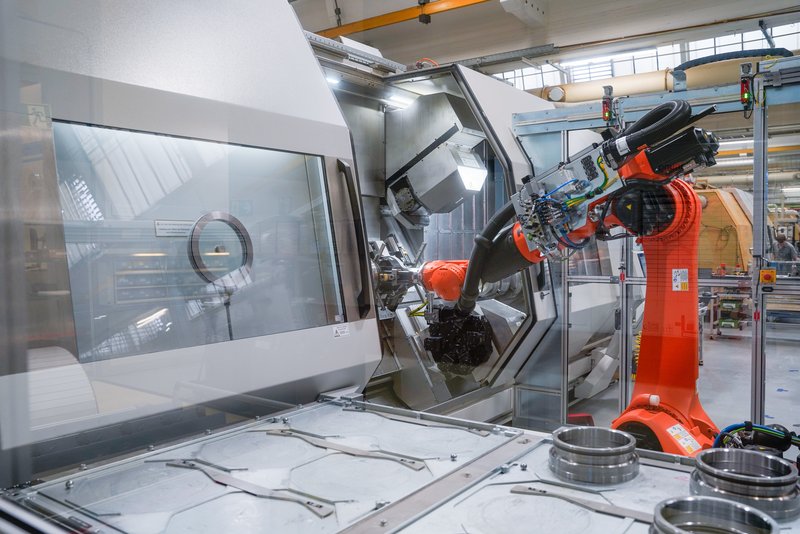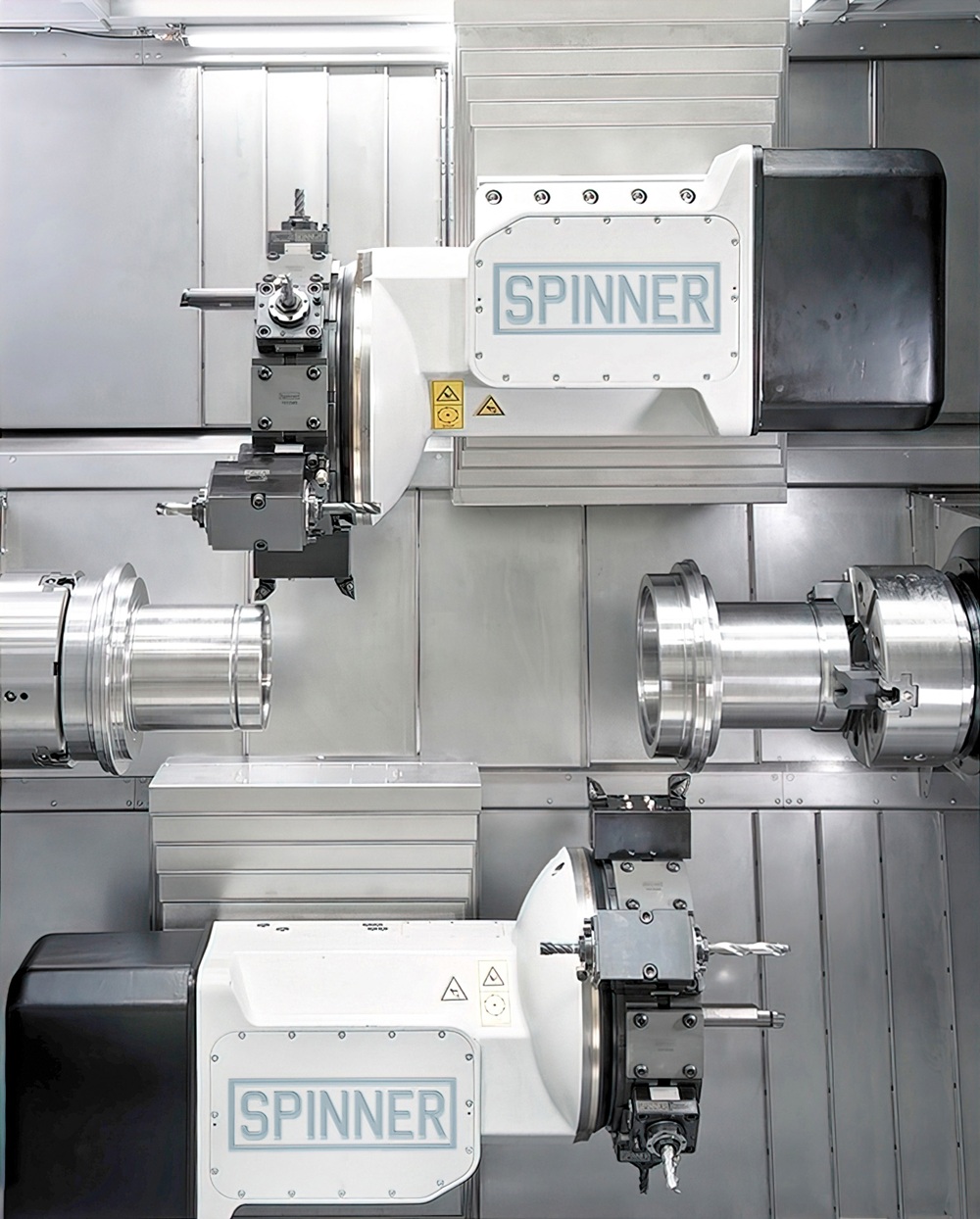At Mazak Corporation’s recent Discover 2025 event in Florence, Kentucky, the company unveiled its compact QRX-50MSY CNC turning centre, which provides manufacturers with the speed and versatility needed during the high-volume production of small, intricate parts. According to Mazak, the QRX-50MSY’s combination of milling capability, second turning spindle and Y-axis functionality delivers exceptional performance for shops machining small parts such as EV input shafts, mid-shafts, valve fittings and other components exceeding 50 mm in diameter.
The QRX-50MSY is the latest adaptation of Mazak’s HQR Series two-turret/two-spindle CNC turning centre, which has similar milling and Y-axis functions. Mazak’s new machine boasts a 15% smaller footprint with floor dimensions of 3030 x 2200 mm, while maintaining throughput and reduced cycle times. Additionally, the QRX-50MSY’s modular design uses common machine components such as identical left and right spindles, upper and lower turrets, and upper and lower carrier drives. The modular nature of the QRX-50MSY keeps machine cost down to maximise a manufacturer’s return on investment when producing small parts.
Mazak’s slant-bed QRX-50MSY sports a maximum bar diameter capacity of 50 mm with a 152 mm diameter chuck. The main and second spindles use 15 kW motors that provide maximum speeds of 6000 rpm. The 12-station/24-tool position upper and lower turrets feature 5.3 kW rotary tool spindles that also offer speeds up to 6000 rpm.
Its tool holding utilises a BMT 45 interface for fast, precise tool changes. The interface uses static and driven tools and supports a wide range of tool holder types, including radial, axial and angular holders.
The QRX-50MSY comes standard with the Mazatrol SmoothG CNC that includes conversational programming as well as EIA-ISO G-code programming capabilities.
More information www.mazak.com



















